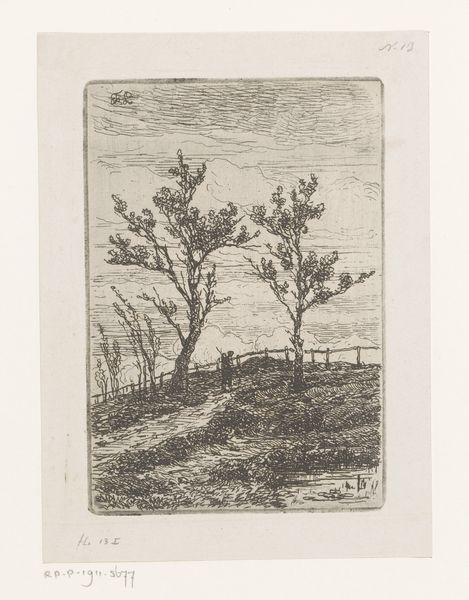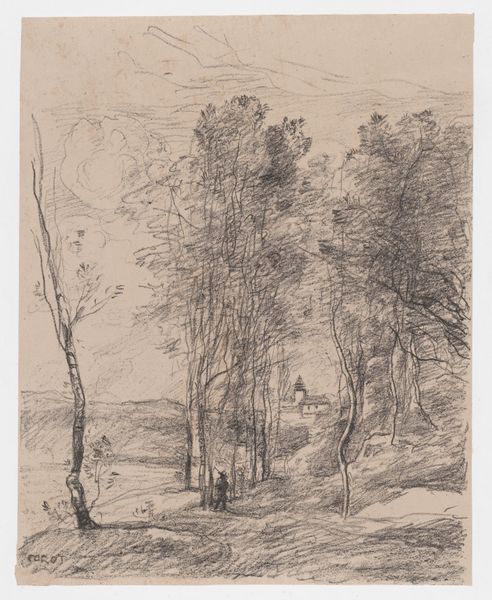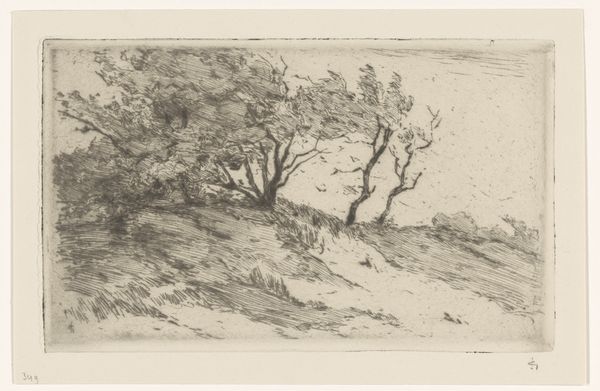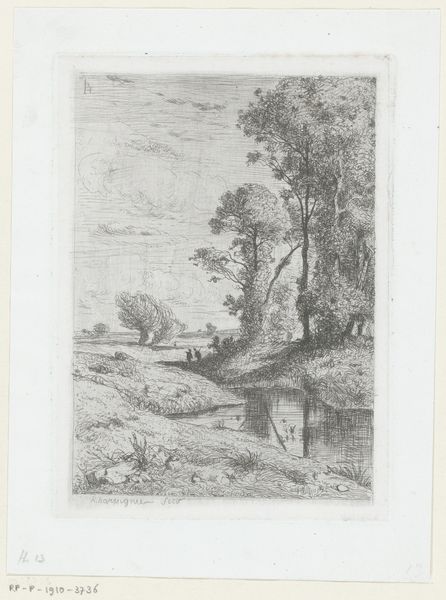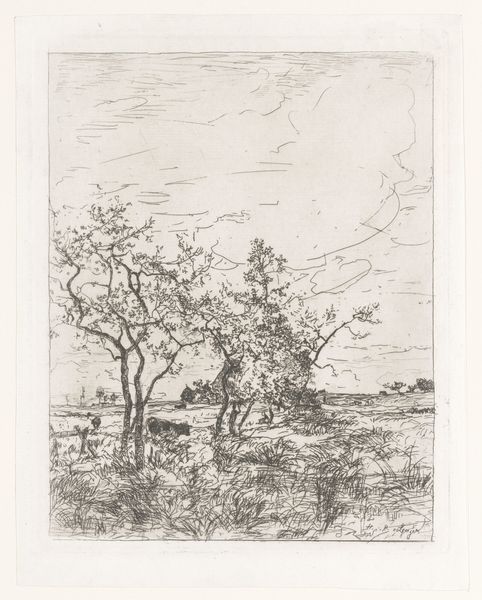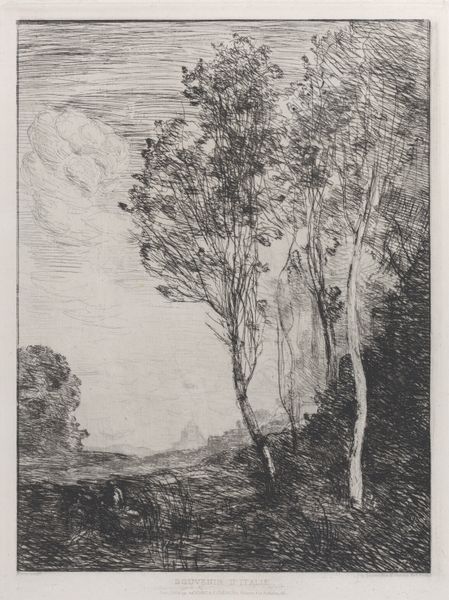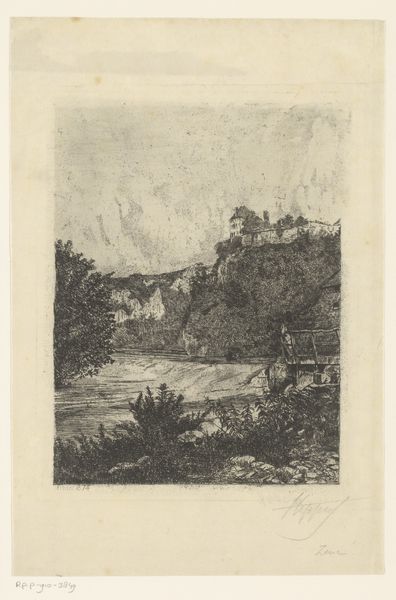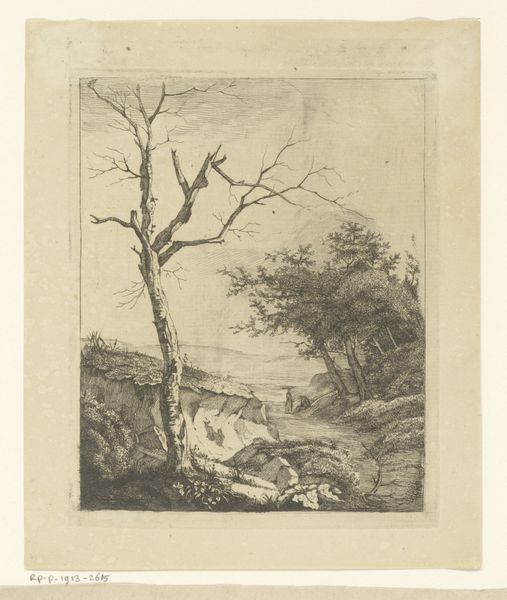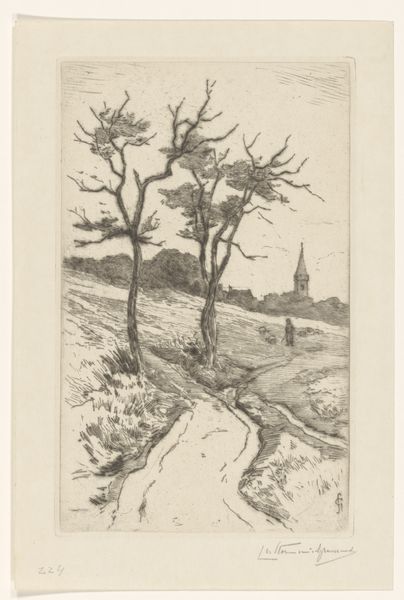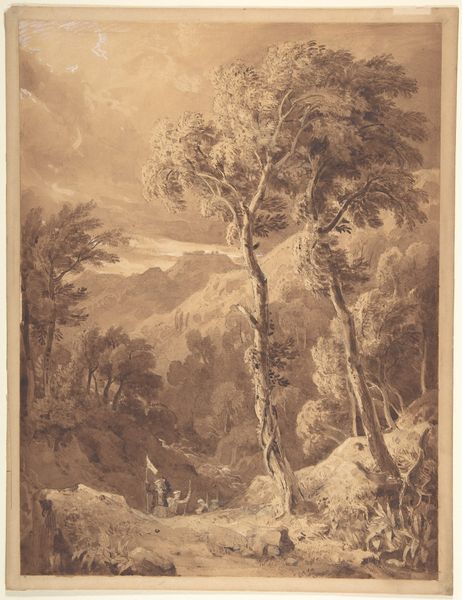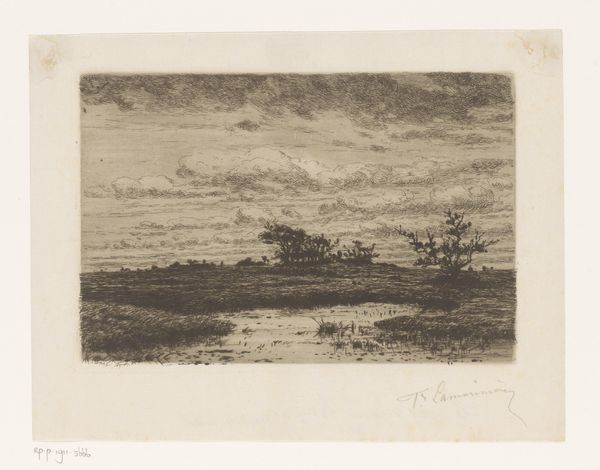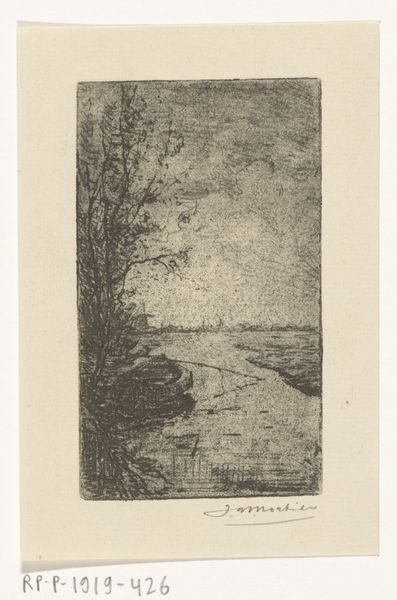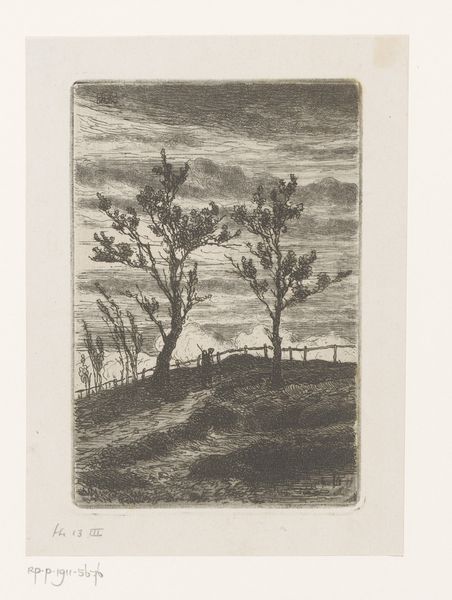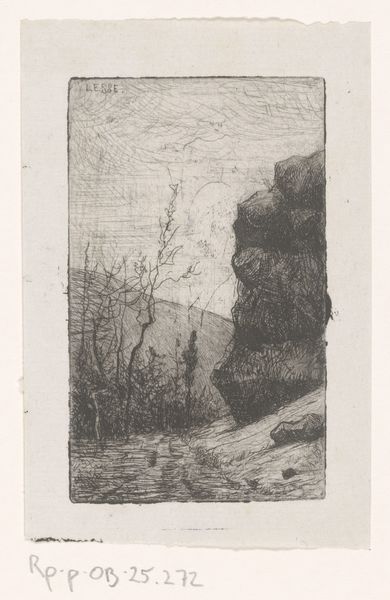
Herfstdag in de duinen, met stormweer 1851 - 1902
0:00
0:00
carelnicolaasstormvansgravesande
Rijksmuseum
print, etching
#
dutch-golden-age
# print
#
impressionism
#
etching
#
landscape
#
etching
#
realism
Dimensions: height 421 mm, width 281 mm
Copyright: Rijks Museum: Open Domain
Editor: We're looking at "Autumn Day in the Dunes, in Stormy Weather," an etching by Carel Nicolaas Storm van 's-Gravesande, created between 1851 and 1902. There's a somber, almost ominous quality to it. What visual language strikes you in this etching? Curator: The dynamism, most definitely. Note how the wind physically shapes the trees, the dune grass, even the clouds. This isn't just a representation of a storm; it’s a visual metaphor for the forces shaping not only the landscape, but perhaps also the human psyche. Storms are, across cultures, powerful symbols of inner turmoil, change, and purification. Editor: I hadn’t thought of the inner turmoil aspect, but it makes sense. What about the birds? Curator: Excellent point. The flock flying into the wind represents struggle and perseverance. Birds, frequently perceived as messengers, spirit guides, or symbols of freedom, emphasize an individual’s resilience, and determination, despite the difficult external landscape. What kind of stories might people reading the work bring with them? Editor: Well, the limited color palette and the harsh lines give the sense of isolation, which many might relate to feelings of being stuck, or a fear of not overcoming a challenge. Curator: Precisely. The etching's power rests on its ability to tap into deeply rooted, universally understood symbols, triggering collective memories and emotional resonance. A deceptively simple scene speaks volumes, wouldn't you agree? Editor: Definitely. Seeing how such a bleak landscape can reveal deeper truths is eye-opening. Thanks! Curator: Indeed. By understanding visual languages, we find profound connections between art and the shared human experience, and continuity over time.
Comments
No comments
Be the first to comment and join the conversation on the ultimate creative platform.
